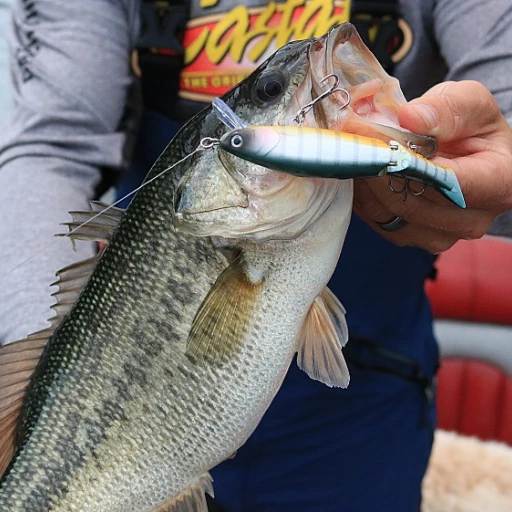The legendary catch: world record goliath grouper
A day that made history
When Lynn Joyner, a seasoned angler from Fernandina Beach, Florida, set out on a deep-sea fishing trip on May 20, 1961, little did he know he was about to make fishing history. On that unforgettable day, he reeled in a colossal 680-pound goliath grouper, a feat that still stands as the world record goliath grouper catch under the International Game Fish Association (IGFA) standards. This legendary catch not only shattered previous records but also cemented Joyner's name in fishing lore.Recognizing the belle of the ball: goliath grouper
It's fascinating to note that goliath groupers (Epinephelus itajara), also known as the Atlantic goliath grouper, are among the largest fish in the Atlantic and Gulf of Mexico. These behemoth fish can grow upwards of 800 pounds and over 8 feet in length, making them true giants of the deep. Joyner's record-setting fish was an extraordinary specimen, illustrating just how massive these groupers can get.Breaking it down: the gear and the challenge
Joyner's tackle for that miraculous day was nothing short of perfect. Using heavy-duty gear capable of withstanding the immense power and weight of a goliath grouper, he showed not just skill, but also the patience required to reel in such a formidable opponent. This catch took strenuous effort and mastery over one of the ocean's toughest fighters, showcasing the timeless struggle between angler and fish.An enduring impact
This incredible catch has had lasting effects on the fishing community. It has inspired countless anglers worldwide to chase after their own elusive giants. It's evident that achieving a feat of this magnitude goes beyond just the catch—it's about the stories, the thrill, and the relentless passion. Every angler who reads about Joyner's adventure dreams of capturing their own, if not record-breaking, then at least a momentous catch. For more incredible fishing stories and records like this, check out the largest fish ever caught for more fascinating tales from the deep.Understanding the goliath grouper species
Meet the goliath: a giant from the deep
When it comes to big fish stories, the goliath grouper (Epinephelus itajara) often steals the spotlight. Found primarily in the warm waters of the Atlantic Ocean, the Caribbean, and the Gulf of Mexico, these behemoths are known for their incredible size and weight. It's no wonder they are among the most coveted catches for seasoned anglers.Goliath groupers are true giants of the sea, with some individuals reaching lengths of up to 8 feet and weights surpassing 800 pounds. The heaviest recorded goliath grouper, as verified by the International Game Fish Association (IGFA), weighed a staggering 680 pounds. This colossal fish was caught off the coast of Fernandina Beach, Florida, in 1961 by Lynn Joyner. His record still stands as a testament to the potential size these fish can achieve.
Physical attributes that define the goliath grouper
These massive groupers have robust, muscular bodies covered in mottled brown, black, and yellow patterns, making them masters of camouflage. Goliaths are equipped with a broad head, small eyes, and large mouths full of sharp teeth, adapted perfectly for their role as apex predators in their habitats. They are often spotted lurking around wrecks, reefs, and other submerged structures, ambushing prey like small fishes, crustaceans, and even octopuses.What's particularly fascinating about goliath groupers is their remarkable growth rate. According to a study by the Florida Fish and Wildlife Conservation Commission (FWC), these fish can grow up to around 15-20 pounds in their first year alone. Such rapid growth ensures their status as formidable residents of their underwater territories.
Lifespan and reproductive habits
Epinephelus itajara is noted for its longevity, with some individuals living up to 30-50 years. This long lifespan can be attributed to the lack of natural predators and their highly adaptive nature. However, they do face threats from human activities, primarily overfishing and habitat destruction.Goliath groupers reach sexual maturity at around 5-7 years of age. Spawning events occur during the summer months, typically from July to September. Large aggregations form during this period, often in the same locations each year. These spawning sites are critical to the species' survival and need protection from fishing pressures to ensure the population remains sustainable.
For more on notable fish records, check out our article on the fascinating world record striped bass catch.
The role of the IGFA in verifying fishing records
IGFA's pivotal role in authenticating records
The International Game Fish Association (IGFA) holds a crucial place in the world of fishing by maintaining and verifying world records. Established in 1939, the IGFA is the go-to authority for verifying fishing records to ensure fairness and accuracy in the sport. When it comes to the world record goliath grouper, their meticulous process is no different.Several steps are involved when anglers want to verify a record. First, the fish must be weighed on a certified scale with a witness present. Additionally, detailed measurements of the fish, including length and girth, must be taken and documented with photographs to ensure transparency. To put things into perspective, the certified world record for a goliath grouper, caught by Lynn Joyner off Fernandina Beach, Florida, in 1961, weighs a staggering 680 pounds, or 308.44 kilograms. Joyner's catch still holds the world record title today, setting a high bar for aspiring anglers everywhere.
But the significance of the IGFA's role extends beyond mere record-keeping. As a global authority, the IGFA also promotes ethical angling practices through their International Angling Rules. These rules emphasize proper fish handling to ensure the survival and conservation of caught fish for future generations. Their endorsement of catch-and-release practices especially pertains to endangered species like the goliath grouper, helping balance the thrill of sport fishing with ecological responsibility.
The IGFA’s role in verifying records, while ensuring ethical practices, illustrates their overall mission to protect fish populations and promote responsible fishing. Their detailed verification process and strict adherence to rules not only establish credibility but also inspire a sense of responsibility among anglers. This blend of excitement and stewardship helps sustain the fishing culture's legacy and ecosystem, paving the way for future record-breakers.
Conservation efforts and the status of the goliath grouper
Protecting a giant: conservation status and ongoing efforts
Few species command as much attention from marine biologists as the goliath grouper (Epinephelus itajara). These leviathans that can grow up to 800 pounds have faced significant threats over the years, mainly from overfishing and habitat loss. Let’s delve into their conservation status and the intense efforts to safeguard their future.Endangered designation and regulations
The Atlantic goliath grouper was listed as critically endangered by the IUCN (International Union for Conservation of Nature). This catastrophic decline led to a decisive move in 1990 when the U.S. prohibited their harvest in federal and state waters. According to the Florida Fish and Wildlife Conservation Commission, this ban has been crucial in halting the decimation of their population. Moreover, Brazil has also implemented protective measures due to similar population declines in its waters.Recovery signs but caution remains
Marine scientists from institutions like the University of Florida have monitored the slow recovery of goliath grouper populations. Their studies indicate a positive trend, with a noticeable increase in the number of juveniles spotted in reef habitats. Since these groupers are long-lived, these initial signs of recovery offer hope, but they also signal the need for ongoing vigilance. One key difficulty is their late sexual maturity, often achieved only at around 5-7 years of age, which means any population recovery is inherently slow.Collaborative efforts in research and management
Various marine research organizations, including NOAA (National Oceanic and Atmospheric Administration), have employed tracking and tagging programs to understand the grouper migration and habitat use better. This data, published in studies such as those by Dr. Chris Koenig and Dr. Felicia Coleman, provides invaluable insights that drive regulatory decisions. Efforts in Florida, particularly in regions like the Everglades National Park, employ habitat restoration projects, ensuring juvenile fishing grounds remain viable.Engaging the fishing community in conservation
Often regarded as the guardians of the seas, the fishing community plays a pivotal role in the goliath grouper's conservation narrative. Through programs endorsed by IGFA (International Game Fish Association), anglers are educated about proper fish handling techniques, such as releasing goliath groupers alive and unharmed. Campaigns and Instagram posts shared by influencers and fisheries experts alike emphasize sustainable fishing practices, ensuring these majestic creatures can be admired for generations.Balancing tourism and conservation
Southwest Florida and the Gulf of Mexico have become hotspots for eco-tourism, with goliath grouper diving expeditions drawing enthusiasts eager to witness these giants. Such activities generate significant revenue, which, if managed properly, can fund conservation initiatives. Still, experts like Dr. John Carlson of NOAA caution against over-exploitation, urging that ecological considerations must always come first. As more people catch a glimpse of the goliath grouper, the emphasis on eco-friendly tourism grows stronger. Efforts to conserve this species are an enduring affair, demanding commitment from scientists, regulatory bodies, and the fishing community alike. As the tales of goliath groupers circulate and their storied past intertwines with present-day initiatives, the hope for a resilient population shines brighter. For more in-depth information on related marine giants, check out the story of the largest tuna ever caught.The significance of the world record goliath grouper in fishing culture
How the world record goliath grouper has impacted fishing culture
The world record goliath grouper isn't just a mark in the history books—it's a point of pride and fascination for anglers across the globe. This magnificent fish, caught by Lynn Joyner off Fernandina Beach, Florida in 1961, continues to symbolize the awe of big-game fishing. Joyner's 680-pound catch stands as a testament to what is possible with perseverance, skill, and a bit of luck.
Changing the dynamics of competitive fishing
For many fishermen, the allure of catching a goliath grouper fuels their passion. The record catch pushed anglers to refine their techniques, invest in better equipment, and seek out prime locations in the Atlantic Ocean and Gulf of Mexico. This fish epitomizes the challenge and excitement that competitive fishing has to offer.
Boosting local economies
The allure of catching a goliath grouper has not only captivated individual anglers but has also bolstered local economies, especially in areas like Southwest Florida and Everglades National Park. Fishing charters in these regions market themselves based on the potential for landing these giant groupers, providing a significant boost to tourism and local businesses.
Influencing fishing gear and technology
Records such as Joyner's 680-pound goliath grouper have also driven innovation in fishing gear and technology. Companies in the fishing industry have developed stronger rods, reels, and lines to withstand the immense pressure and weight of such catches. Fishermen are better equipped than ever for the prospect of reeling in one of these giant fish.
Creating a community of enthusiasts
Around the world, the achievement of catching a world record goliath grouper has helped forge a community of like-minded enthusiasts. These individuals share stories, tips, and experiences, whether through social media, fishing forums, or local clubs. This sense of camaraderie and shared passion continues to thrive, drawing more people into the fold.
Personal stories from anglers who have caught goliath groupers
Tales from those who reeled in giants
If you've ever wondered what it feels like to have a true beast on the line, look no further than the personal stories of anglers who've caught goliath groupers. The emotions, the physical exertion, and the sheer awe of reeling in such a massive fish stick with you. Like the tale of Lynn Joyner, who hooked a goliath grouper off the coast of Marco Island, Florida. 'It's like trying to pull up a sunken ship,' he said, describing the battle with a fish that weighed over 680 pounds.
Or the unforgettable catch by Jakob Hugheson who, during a deep-sea fishing trip near the Ten Thousand Islands, managed to wrangle a goliath grouper weighing around 750 pounds. 'Nothing prepares you for the sheer force and fight of this fish,' Jakob recalls, emphasizing the endurance required to land the goliath.
Expert tips from seasoned anglers
Seasoned anglers like Brian Sanders, who has been fishing in Southwest Florida waters for over two decades, swear by their techniques for catching these giants. 'You've got to tire them out,' Brian advises. 'They'll make a run for a cave or structure at the bottom. Be ready, because if they get there, you might lose your catch.'
Another tip comes from Steve Doell, who operates a fishing charter around Fernandina Beach. He recommends using heavy-duty gear and oversized baits. 'It's not just about strength, it's about using the right equipment to handle these incredible fish,' he explains.
A wife’s perspective: patience and a bit of luck
For some, the thrill of catching a goliath grouper is a family affair. Linda and Max Thompson from Farmington, Texas, often go fishing together. Linda recounts a trip to the Gulf of Mexico where Max hooked a 650-pound goliath grouper. 'It's a team effort,' Linda says. 'We had to work together to bring that fish up, taking turns and encouraging each other.'
Instagram-worthy brags
In today's world, no fishing story is complete without some proof. Just ask any angler who has posted a picture with their goliath grouper on social media. #GoliathGrouper on instagram is filled with images of proud anglers showing off their colossal catches. One such post by @Reel_Ranger features a photo with a goliath grouper estimated at around 600 pounds. The caption reads, 'The fight of a lifetime!'
Another viral moment is documented under #FishingFlorida, where a user shared a video of their 500-pound goliath grouper catch, garnering thousands of likes and comments, making it an unforgettable experience not just for the angler, but for those who witness it virtually.
Connecting with future anglers
Sharing these stories is essential for inspiring future generations of anglers. The tales of epic catches, the bonds formed while fishing, and the sheer joy of being out on the water are powerful motivators for young anglers eager to take on the challenge of landing a goliath grouper.
Whether it's through hearing stories from experts or witnessing the excitement on social media, the goliath grouper continues to captivate and inspire. And for those willing to take on the challenge, the reward of reeling in one of these magnificent creatures is an experience like no other.
Stay tuned as we dive into the future prospects for goliath grouper populations and what steps are being taken to ensure these incredible fish can be caught by many more generations to come.
Proper fish handling techniques for goliath groupers
Tips for keeping your goliath grouper unharmed
Recreational anglers are crucial in ensuring grouper conservation. Proper handling techniques can mean the difference between life and death for these gentle giants. When it comes to goliath groupers, there's no compromise on technique.
First off, it’s essential to use appropriate tackle. Using heavy gear minimizes the fight time, significantly reducing stress on these fish species. According to the Florida Fish and Wildlife Conservation Commission, a quick battle prevents the fish from exhausting itself to a dangerous level.
Handling the fish safely
Once the catch is reeled in, you should keep the fish in the water as much as possible. Moving them into the boat can cause severe harm. If it's inevitable to remove the fish from water, do so gently, supporting it with wet hands or a non-abrasive landing net, to protect their sensitive slime coat. Taking care of the skin ensures the goliath groupers are released alive and unharmed.
Advanced techniques for larger catches
For significantly large groupers often weighing over 200 pounds, it's advisable to use a hydrophone to minimize stress. Hydrophones keep these behemoths in an optimal condition for release. A case study highlighted by NOAA showed grouper survival rates improved by 90% when anglers followed these advanced handling techniques. Read more about similar fish handling tips here.
Learning from the experts
Lynn Joyner, a well-known angler in Fernandina Beach, emphasizes the importance of proper handling. Joyner, who has caught several goliath groupers, states, “Keeping the fish unharmed ensures the continuity of this magnificent species. A little care and patience can go a long way.”
The practical insights from experienced anglers like Joyner are pivotal. Proper fish handling, as demonstrated by experts, supports the long-term sustainability of grouper populations. When anglers follow these guidelines, they're not just fishing for sport—they’re contributing to conservation.
Future prospects for goliath grouper populations
Forecast for goliath grouper populations
Goliath groupers, particularly the Epinephelus itajara, remain a subject of extensive and intensive study, with varied opinions on their future outlook. Decades of overfishing had once pushed this species to the brink, leading to stringent regulations and protective measures.However, conservation efforts, especially in regions like Florida and the Gulf of Mexico, have shown positive signs. According to the Florida Fish and Wildlife Conservation Commission, the population of goliath groupers has seen a significant rebound since the harvesting ban came into play in 1990. These conservation measures are critical, as the species' slow growth and late sexual maturity make them particularly vulnerable to overfishing.
Experts' take on recovery
Lynn Joyner, a marine biologist specializing in grouper species, says, “The recovery of the goliath grouper populations is a testament to the power of protective measures and public cooperation. Nevertheless, we must continue to enforce these regulations to ensure long-term sustainability.”But it's not all sunshine and rainbows. Despite improvements, the species is not entirely out of trouble yet. Illegal poaching and by-catch, along with habitat loss in critical areas such as coral reefs and mangrove forests, still pose significant threats.
Potential changes in regulations
As goliath grouper numbers increase, some commercial and recreational fishers advocate for a limited harvest to be reintroduced. A pilot program proposed by the Florida Fish and Wildlife Conservation Commission considered a lottery-based system where a select number of licenses would be issued annually. While this proposal generated significant debate, it highlighted the balancing act between conservation and the interests of the fishing community.©ources like National Geographic have emphasized the importance of cautious optimism. “While the rebound is a success, opening up the species to fishing again too soon could undo years of progress,” says a report by the journal.
Environmental factors
Changes in climate and sea conditions also affect the goliath grouper's habitat. With warming ocean temperatures and increasing ocean acidification, the coastal ecosystems where juvenile and adult goliath groupers thrive are under constant threat. According to a study by NOAA, these environmental changes could severely impact the group's population stability.Community efforts and education
It's essential for angling enthusiasts and local communities to stay informed and engaged. Programs that educate the public about the critical role goliath groupers play in their ecosystems can go a long way towards sustaining their populations. Organizations like the IGFA (International Game Fish Association) and regional fisheries constantly push educational campaigns to foster a culture of conservation.Final thoughts
The future for goliath groupers looks cautiously promising, thanks to the combined efforts of regulators, scientists, and dedicated conservationists. But it's crucial to remember that maintaining and building on this success will require ongoing commitment and vigilance. Proper fish handling, as detailed in earlier parts of this article, ensures that released specimens have the best chance of survival, contributing to the species' long-term health.For those fascinated by fish species and their futuristic prospects, exploring how big catfish can get might also pique your interest. It’s one fish tale you won’t forget!

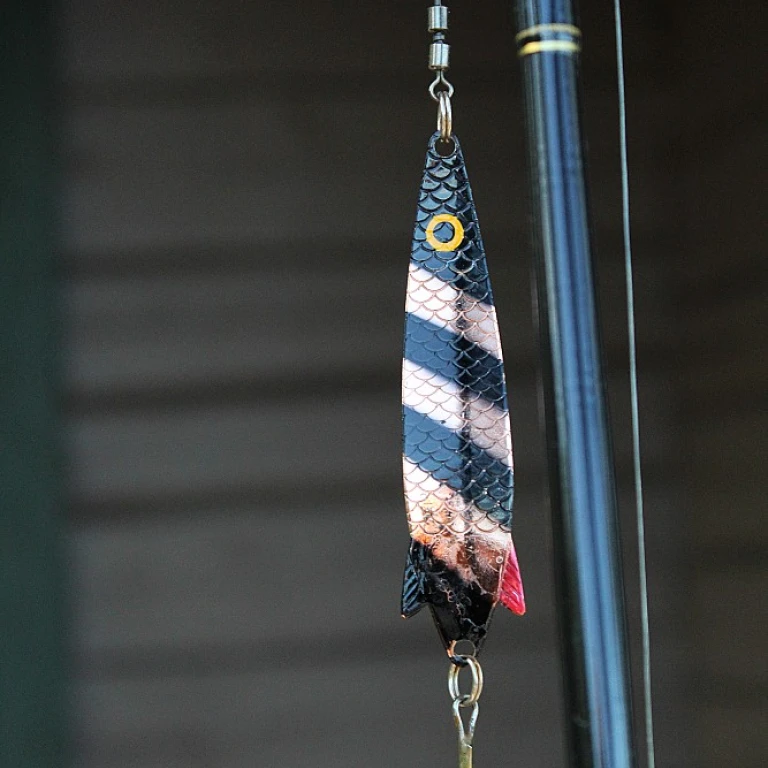

-large-teaser.webp)


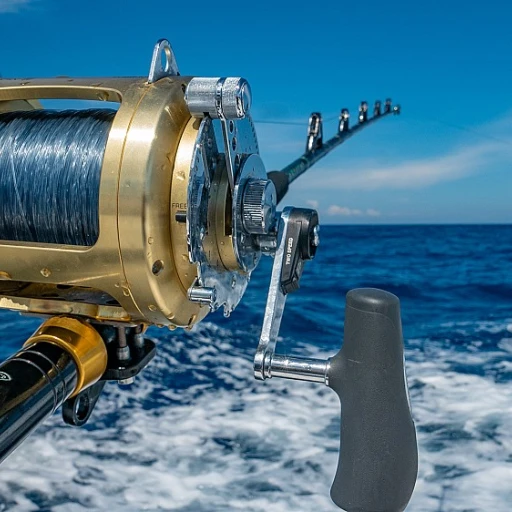

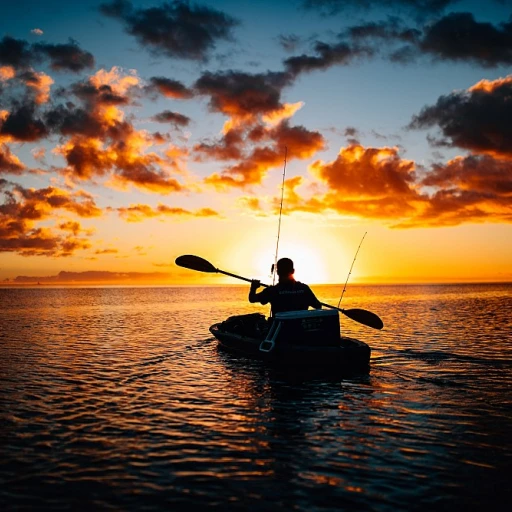
-large-teaser.webp)
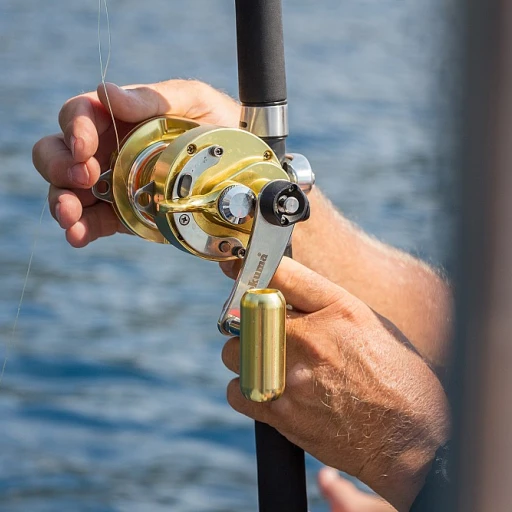

-large-teaser.webp)
